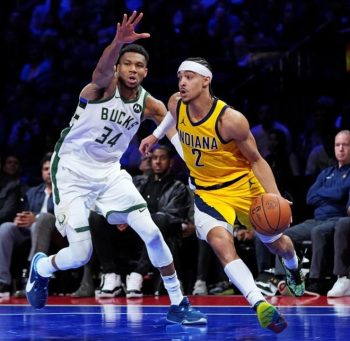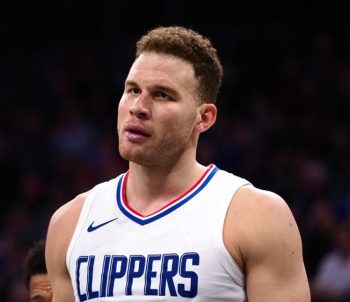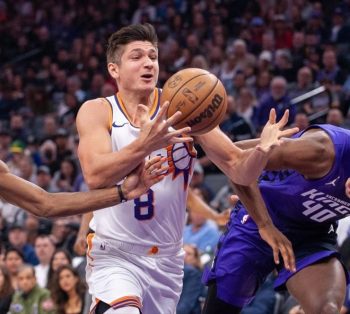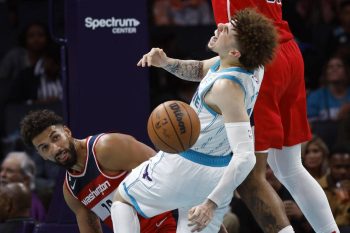NBA
Fixing the Utah Jazz
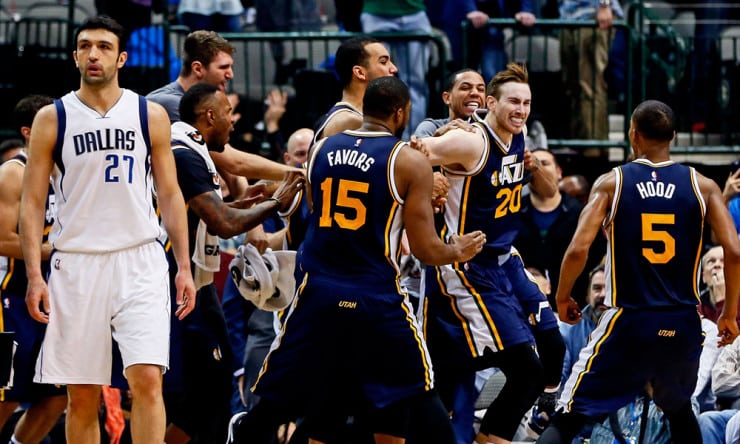
Set against the backdrop of Kobe Bryant’s final NBA appearance, an event that more closely resembled a circus than a basketball game, the ending to another Utah Jazz season felt extremely surreal. It wasn’t just the hysterics of the moment, though watching a legend cap off a splendid career with a whirlwind come-from-behind performance as players, fans and referees alike temporarily forgot the traditional framework of basketball only heightened the strangeness. There was something more, though, a sense of abruptness most close to this team are unaccustomed to in recent years.
The players were informed just before tip that a Houston Rockets win had sealed their elimination, a fact that made subsequent events possible (sorry, Lakers fans, but that game goes a lot differently if the Jazz are playing for anything). At the same time, it put a sudden stop to a playoff chase that not even a week prior had seemed like nearly a sure thing.
Utah’s outside-looking-in finish naturally inspired disappointment, and with reason. This team had higher goals entering the season. A few costly missteps down the stretch could have meant the difference between playoff games and an early vacation.
However, little has changed in the team’s long-term outlook. Their future fortunes never hinged on a few games here or there within a single season. A thorough front office has already begun the process of looking back, assessing and finally moving forward; let’s do the same from an outside standpoint.
Progress
“It’s hard to say we’re disappointed when your point differential is better, your record is better,” Jazz general manager Dennis Lindsey said. “To a man, all of our players improved individually.”
Lindsey went on to say that everyone with the team really was disappointed in the final result – it may have seemed contradictory, but really just represents his approach. One can bemoan falling short of a particular benchmark without crushing the underlying process, and that’s what’s happening here.
A series of badly timed injuries are a good lens through which to view this line of thought. That the Jazz improved in defensive efficiency from 12th overall last year to seventh this year is good on the surface, but feels much more impressive when considering that their three most important defensive players from last season (Rudy Gobert, Derrick Favors and Dante Exum) each missed significant time, with Exum sitting out the entire campaign. Evolved sixth man Alec Burks also missed three months. By way of final tally, four of Utah’s projected top six rotation players as of a year ago today missed a quarter of the season or more, with overlap in certain cases that only exacerbated things.
To whatever degree these bits of bad luck contributed to the team’s final standing, the time for that analysis has already passed. What’s done is done. The process-driven side, though, can pick positive nuggets from even the worst of situations.
Utah eked out roughly a league average offense for the second consecutive year. That won’t be enough for their eventual aspirations, but given all context involved it seems like a small win. The Jazz started a foreign rookie at point guard for most of the year, and endured periods where their frontcourt rotation was comprised of Jeff Withey, Trevor Booker and another rookie in Trey Lyles. Depth was a major concern, but was never quite able to fully submarine the team’s attack.
Lyles might be the clearest silver lining, another on a quickly growing list of young players who rapidly improved under Quin Snyder. Lost on both ends in November as a rookie who didn’t even play the same position in college, Lyles was thrust into a larger role than expected as Favors and Gobert missed overlapped time in December and January, coming out the other side with a more refined game than virtually anyone could have predicted. He finished the year as a 38 percent three-point shooter, and even more importantly developed a pump-and-go driving game to supplement it.
Lyles is already looking like a future key for this team, with a versatile skill set that could allow them to flip between “big” and “small” identities instantly, and he’ll create a talent overload in the frontcourt in a hurry if his development maintains this pace.
Fellow rookie Raul Neto was another clear success, handling the starting job at the point admirably for the first chunk of the season before continuing to succeed in a backup role after Shelvin Mack was acquired at the trade deadline. Neto quickly bucked a non-shooter reputation from overseas, finishing just decimals behind Burks as the team’s most accurate three-point shooter on a steady diet of catch-and-shoot looks, and was a consistent and engaged defender despite being undersized. His penchant for canning ridiculous, high-difficulty looks became the stuff of Jazz Twitter legend by midseason.
Mack’s addition and relative success lessened Neto’s role, but an assumption that Mack is permanently ahead on the depth chart is premature heading into the summer with Exum returning. Both will get a chance to compete for minutes behind or even alongside the Aussie.
Other bits of progress were clearly evident as the year wore on, particularly the team defense; the Jazz were third for league-wide defensive efficiency after the All-Star break, and second in this category from the moment both Favors and Gobert returned from their respective injuries in late January. Sophomore Rodney Hood had ups and downs, but put lingering foot issues behind him to play 79 games on the year and establish himself as a go-to offensive option. Star Gordon Hayward may not have made any big leap numbers wise, but he showed a noticeable defensive improvement without lowering the nightly burden he carried on the other end.
So many areas are incomplete, but tracking real progress made is easy. Snyder is still learning himself, something he frequently alluded to, and falling just short of the postseason will instill a greater sense of urgency in all parties involved next year.
Roadblocks
Regardless of their final spot in the standings, a few major issues persisted throughout the season and stand in the way of the heights this team hopes to reach. A look at a few of the most relevant:
- Crunch time play
The Jazz’s point differential was more in line with a 46-win team than the 40 we saw, and the chief culprit for the gap was a season-long struggle to close big games. Utah was outscored by a gross 17.8 points per-100-possessions during the final five minutes of regulation or overtime with the score within five (NBA.com’s most-used definition for “crunch time”), worse than any team in the league other than sad sacks Philadelphia and Phoenix. Team defensive rebounding, normally a strength, was likewise 28th during these high-leverage minutes, which contributed in large part to a massive gap between the team’s standard defensive expectation and the reality during crunch time. Much of it tied back to a team-wide lack of readiness for the way the game changes in these big moments.
“The way the game is played at the end of a game is different. It’s a lot more physical,” Snyder said. “There [are] screens that sometimes aren’t legal in the first quarter that become more legal in the fourth quarter. Hopefully [we can] help our players understand that the game has shifted, that there’s a point in the game where it is unique, and for us to raise our concentration, our physicality and our competitiveness to respond to that. I don’t think we were able to do that on the level that we liked.”
Snyder’s year was fascinating on the whole from a rotation and game management standpoint, and nowhere is that more crystallized than in his decisions down the stretch of close games. The injuries obviously threw things out of whack to a large degree, but a careful eye could spot some interesting trends even during healthy periods – particularly pertaining to the “frontcourt of the future” in Gobert and Favors.
The Jazz have embraced a big identity spurred by those two even as the league around them goes in the other direction, but Snyder’s seeming lack of confidence in the pairing to close tight games could throw this somewhat into question. Gobert played in barely half the team’s crunch minutes following the All-Star break, and Favors wasn’t too far ahead of him as Snyder appeared to prefer one of Lyles or Booker alongside a revolving Gobert-Favors door.
The decision is made more curious by the realization that, from a relative standpoint, the duo did a perfectly good job when they did see the court together down the stretch. Data from Nylon Calculus’ Seth Partnow using slightly different time and score thresholds (final six minutes, score within 10 at any point to more closely match typical rotational patterns) reveals that the two were nearly neutral on a per-possession basis. That’s a huge step up from the atrocious figure the Jazz posted as a team, and a mark that would have seen them easily make the playoffs if it were applied across the balance of their crunch time minutes on the year.
It’s not that simple, of course, but the issue certainly casts light on what could be a big personnel situation down the line. Even if there are times where it was the right move, Snyder’s reluctance to stick with the team’s stated identity raises questions; he often directly referenced matching up to smaller opponents while explaining the decisions. If at least one of the team’s three best players simply can’t be on the floor during many of their biggest moments, is that identity flawed? Is that really the best allocation of team resources in the long term?
The Jazz aren’t panicking in this or any other regard, but it’s worth monitoring – and, if one sees continued issues on the horizon, quietly considering options to assess the situation. In any case, their play down the stretch is a top, stated priority in the offseason.
- Depth
The various injuries really exposed this one, but it would have been an issue regardless. Exum’s ACL tear in July left Utah thin at the point for the entire year, and while each of Mack, Neto and Trey Burke had their moments, the position was a consistent source of weakness relative to competition.
The same things happened on the wings and in the frontcourt, though to lesser and more temporary degrees. Burks’ absence forced real minutes onto Joe Ingles and Chris Johnson, the former of whom is a solid situational veteran and the latter of whom isn’t currently an NBA rotation player. One could certainly question whether upgrades on at least Johnson were possible at some point along the line, whether earlier in the year or at trade deadline or buyout season. Guys like Jeff Withey and Lyles did well in expanded roles while Favors and Gobert were down.
Lindsey was frank in his end-of-season media availability, noting that improving depth was another top priority.
- Turnovers
The Jazz coughed the ball up at the fourth-highest rate in the league, a number that only got worse with Mack’s arrival at the break. A simple lack of ball-handling talent contributed in a big way, and it seems fair to assume that Snyder’s relatively simplistic offensive scheme deserves some blame as well. Decision-making probably covered the rest – on too many occasions, Jazzmen inflicted their own wounds with poor judgement and a tendency to dig themselves into a hole by doing too much (or too little) with the ball.
As both Snyder and Lindsey noted postmortem, the effects here weren’t only felt on the offensive side of the ball – Utah’s defense suffered as a result of all the transition opportunities they gave up through killer live-ball turnovers, and could have been even better than seventh in the league otherwise.
- Transition Play
If defensive transition as a result of turnovers was a warning light, the team’s own ability to generate these sorts of free points was a huge neon sign. Masked slightly to the casual fan by their slow pace and middling opponent turnover numbers, Utah’s unwillingness to push in transition extended well beyond reasonable excuses and was likely their largest tactical issue this season.
A good proxy for measuring a team’s “aggression” on the break is looking at the percentage of shots they attempt within five to seven seconds directly following a forced turnover or a defensive rebound – easily the two most common preceding events to fast breaks. Per Nylon Calculus data, the average NBA team in 2015-16 attempted a shot within seven seconds about 43 percent of the time following a defensive rebound.
The Jazz, though? They weren’t even at 25 percent as of the final week of the season, far and away the lowest in the NBA. The next-lowest team in this regard was Dallas, who still pushed the ball nearly 33 percent of the time. Simply attempting and making these shots at league average rates would have added nearly half a point to Utah’s season-long per-100-possession offensive rating.
It was much of the same following turnovers, where the Jazz were 23rd in aggression by this same metric. Per inpredictable.com, only the Spurs averaged longer possessions following opposing cough-ups than Utah. The theme is clear: The Jazz were incredibly hesitant to push advantages in transition.
Even when they did muster up the courage, the execution was frequently lacking. Timing seemed to be a big issue, with a two-on-one or three-on-one break blown by elementary level decision-making seemingly every night. Bad three-point shooters peeled away from layups for low-percentage prayers from beyond the arc; many Jazz players simply seemed confused about which lanes to run in. Guys made fancy plays when simplicity would do. Hayward, easily the wing on this team who’s most capable of absorbing a physical style, developed a maddening tendency to eschew even minor contact at the rim in favor of tougher mid-range pullups.
For a team lacking offensive punch in the halfcourt for obvious reasons, this simply isn’t acceptable. The Jazz badly need these easy points, particularly if they stick to their big, defensive identity moving forward. Execution on chances taken is one fixable element, but convincing guys to be aggressive and pursue the opportunities in the first place needs to be a big emphasis for Snyder.
Eyes Forward
The Jazz now move into the next stage of their multi-year project. An unprecedented cap environment is the backdrop for the most pivotal summer for the franchise in at least a half-decade, after which a season with the highest expectations since the Jerry Sloan days will be upon them.
Team brass is open to all potential summer avenues, and will be aggressive from the start. Utah’s first-round pick, presumed 12th again barring some major lottery luck, would be on the table for the right deal along with all three of their second-rounders. The Jazz’s outlook on team-building is a shorter one now; with the grunt work of assembling a core mostly finished, the details and margins come into focus.
A common concern in some circles is the displacement of current pieces. Upgrading talent naturally means reducing or eliminating someone else’s role, and some struggle with this idea for a Jazz team with a young, talented starting five all ostensibly in place already.
The NBA is cyclical, though, and it’s easy to forget that the team has dealt with significant re-shuffling as recently as this season, and mostly come through it unscathed. Utah added four new names from last season’s squad in Neto, Lyles, Withey and Mack, and all four played real on-court roles at one point or another. The Jazz value the continuity they’ve fostered with this core, but won’t let fear of the future – whether in the form of role changes or eventual money concerns – stop them from addressing the now.
Lindsey’s admission last week that two larger moves featuring multiple draft picks and a “major salary slot” were agreed upon but never consummated (for reasons unknown) at the deadline is reflective of his group’s attitude here. Competition for roles is never a bad thing, so long as everyone is on board with the group’s mission. The Jazz won’t hesitate to pull the trigger this summer for the right piece.
Salary considerations are in play as well, particularly for Gobert. The Stifle Tower is eligible to begin negotiations with the Jazz for his rookie extension, and could ink a deal that wouldn’t kick in until the beginning of the 2017-18 season if both sides were to reach an agreement before October 31.
How they choose to approach things here will be interesting, especially under this exploding cap. Gobert’s cap hold (a figure that counts against a team’s cap number as a placeholder even once a player’s contract has expired, unless the team renounces his rights) in the summer of 2017 is a measly $5.3 million, meaning he won’t clog up their books to any large degree if they wait on an extension. It’s a risk, but if the Jazz were fully convinced Rudy was on board and willing to play ball, they could table things this year and save his extension for next summer, allowing them to spend up to the ludicrous $107 million (projected) cap before signing Gobert over the top of that using Bird rights.
All signs to this point indicate that Gobert is all-in with the team, but risks remain. A leap next season could see his asking price rise, and the Jazz could end up wishing they’d locked him up to a more team-friendly deal when they had the chance. Leaving him with any chance at all of hitting the open market could create a situation similar to Gordon Hayward’s a few years ago with Charlotte – the Jazz lost a year of team control on Gordon’s deal due to a poison pill Charlotte included in their offer sheet, and similar things could happen with Gobert. His worth in a vacuum is another topic altogether, and where any real or rumored deals place him relative to his peers will be interesting to track.
Burke is also eligible to begin rookie extension conversations, but these seem far less likely to produce a deal. Burke was relegated to third point guard duties and barely played following Mack’s acquisition, and it’s been clear for some time that he desires a larger role. Burke has handled a tough situation with nothing but class and professionalism, and some of the negative insinuations made against both him and his representation are simply flat-out false. He’s also become a better basketball player, though whether he has any positive trade value at this point is uncertain. Regardless, it looks as though his time in Utah is drawing to a close. It would be a surprise if he played another game in a Jazz uniform.
In between the draft and these negotiation deadlines lies another summer of international play, with multiple Jazzmen once again potentially involved. Neto is presumed set to play for his home country of Brazil, something he’s done in the past, and while Hayward is a big long shot to make the U.S. team for the Rio Olympics, he’d certainly play if he was included. Lyles would likely play for Canada if they qualified, but that’s under a 50 percent proposition currently.
Gobert and Exum are more interesting cases, the latter in particular. It’s not lost on anyone that Dante’s major injury came during a friendly for the Australian national team, and while blaming them in any way is obviously silly, there are real concerns to allowing his first competitive basketball since then to come outside a Jazz environment. Gobert’s is an issue more of long-term fatigue than anything else, something Lindsey addressed at length. Rudy has indicated he’d like to play in Rio if France qualifies, but that he’ll likely sit out of the qualification itself. Le Bleu will need to win a bit of a strangely-organized tournament with six teams involved, and will be favorites as long as they bring most of their typical roster outside Gobert – though that’s no guarantee. Canada is also involved in this six-team tournament, meaning only one of Gobert or Lyles, at most (and possibly neither), will end up playing in Rio.
There are specific rules for these FIBA-NBA interactions, and the Jazz cannot legally block any player with an independent bill of health who chooses to play for his country. Lindsey and his team would never put back-channel pressure on guys to sit, something it’s fair to assume a few other teams might consider.
At the same time, though, they know that these players’ development comes from the Jazz, and only the Jazz. Exum in particular isn’t gaining a whole lot by standing in the corner watching other guys run the point, his typical role under Australian coach Andrej Lemanis in the past. Gobert came to camp exhausted last year after a rigorous summer with the French team, and while the Rio timetable is friendlier, the Jazz are fully aware he’s had precious little time to rest his body in the last couple years. No one within the organization would do anything to stop them from playing if they’re healthy and willing, but no one is spilling any tears if their next competitive basketball comes during preseason play with Utah.
With a unique year in the rear view, a vital time for the Utah Jazz franchise approaches. The next 16 months will go a long way to determining the fate of the team’s current iteration, and of management’s long developmental view. No pressure, guys.


